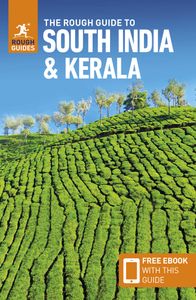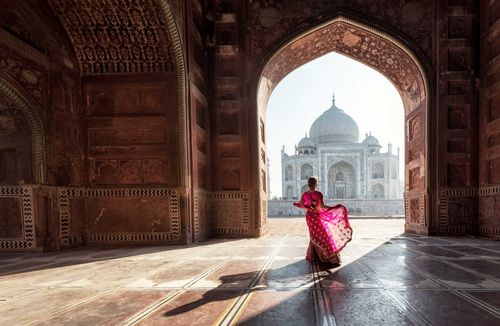#2 Visit the CVN Kalari Sangam
Around 500m southeast of the temple in East Fort, the redbrick CVN Kalari Sangam ranks among Kerala’s top kalarippayat gymnasiums.
It was founded in 1956 by C.V. Narayanan Nair, one of the legendary figures credited for the martial art’s revival, and attracts students from across the world. Every morning except Sunday you can watch fighting exercises in the sunken kalari pit that forms the heart of the complex.
Foreigners may join courses, arranged through the head teacher, or gurukkal, although prior experience of martial arts and/or dance is a prerequisite.
#3 Shop at the Chalai Bazaar
Thiruvananthapuram’s main source of fresh produce and everyday items is the kilometre-long Chalai Bazaar. It runs east from MG Road in East Fort, from opposite the main approach to the temple. Lined with little shops selling flowers, incense, spices, bell-metal lamps and fireworks, it’s a great area for aimless browsing.
#4 Watch authentic performances at Margi School
Thiruvananthapuram has for centuries been a crucible for Keralan classical arts, and the Margi School, at the western corner of the Fort area, is one of the foremost colleges for kathakali dance drama and the more rarely performed kudiyattam theatre form.
Most visitors venture out here to watch one of the authentic kathakali or kudiyattam performances staged once each month in its small theatre, details of which are posted on the school’s website.
To reach Margi, head to the SP Fort Hospital on the western edge of Fort and then continue 200m north; the school is set back from the west side of the main road in a large red-tiled and tin-roofed building, behind the High School (the sign is in Malayalam).
#5 Explore the Napier Museum
A minute’s walk east from the north end of MG Road, opposite Kerala Tourism’s information office, brings you to the entrance to Thiruvananthapuram’s public gardens. As well as serving as a welcome refuge from the noise of the city, the park holds the city’s best museums.
Give the dusty and uninformative Natural History Museum a miss and head instead for the more engaging Napier Museum. Built at the end of the nineteenth century, it was an early experiment in what became known as the “IndoSaracenic” style. This meant tiled, gabled roofs, garish red-, black- and salmon-patterned brickwork, and a spectacular interior of stained-glass windows and loud turquoise, pink, red and yellow stripes.
Highlights of the collection include fifteenth-century Keralan woodcarvings, terrifying Ceylonese (Sri Lankan) masks, a carved temple chariot (rath) and Chola and Vijayanagar bronzes.
#6 Visit the Sri Chitra Art Gallery of Thiruvananthapuram
You pass through the main ticket booth for the city’s depressing, faded zoo to reach the Sri Chitra Art Gallery, which shows paintings from the Rajput, Mughal and Tanjore Schools, along with pieces from China, Tibet and Japan.
The meat of the collection, though, is made up of works by the celebrated artist Raja Ravi Varma (1848–1906), a local aristocrat who achieved fame and fortune as a producer of Hindu mythological prints – forerunners of India’s quirky calendar art.
Varma’s style was much criticised by later generations for its sentimentality and strong Western influence, but in his time he was regarded as the nation’s greatest living artist.
Also on view at the Sri Chitra, in rooms to the rear of the main building, are a couple of minor Tagores, and some striking, strongly coloured Himalayan landscapes by the Russian artist-philosopher and mystic, Nicholas
Best areas to stay in Thiruvananthapuram
From the tranquil beach retreat of Kovalam to the vibrant city centre and serene residential areas like Vellayambalam, here are some of the best areas to stay in Thiruvananthapuram.
Kovalam
Situated approximately 16 kilometres from the city centre of Thiruvananthapuram, Kovalam boasts a diverse range of accommodations, including beachfront resorts, budget guesthouses, and homestays.
Thiruvananthapuram city centre
Thiruvananthapuram city centre, also known as Palayam, is a vibrant area that provides convenient access to major attractions. It is home to a variety of hotels, catering to different budgets and preferences, including business hotels.
Varkala
Although technically located in the neighbouring district of Thiruvananthapuram, Varkala is a sought-after beach town easily accessible from the city. It’s dotted with Swish resorts and some pokey hostels.
Browse the best hotels in Thiruvananthapuram.


_listing_1448379939234.jpeg)























